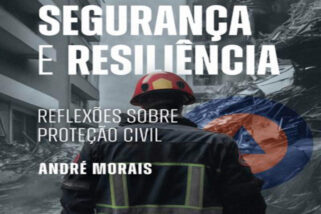Last week, day 17 of September, a student of 12 years of Azambuja basic school stabbed six classmates, Therefore, the topic of this article is the reaction to an active shooter in a school.
Colonel of the GNR
Master in Law and Security and Homeland Security Auditor
On this subject, it is recalled that the National Republican Guard (GNR) was a pioneer in the training of its military personnel and the school community in 2009, responding to an active shooter, whose training action called “Tactical Response to Incidents with Firearms in Educational Establishments”, was given, na height, to all GNR military personnel, especially those who were involved in the Safe School Program and the military personnel of the Territorial Posts, whose objectives included defining the profile of the(s) author(s), the description of the operational environment and the execution of incident reporting procedures relating to incidents of this type of occurrence, considered highly dangerous and requiring immediate intervention.
So, the next lines serve to alert the population in general and the school community in particular, about this phenomenon, which in other countries has already reached pandemic levels, but in Portugal, There is no history of this type of occurrence, this was classified as a “single case”, considering, however, that knowing the phenomenon proves to be extremely important, to better prevent and react.
An active shooter is an individual who is actively involved in trying to kill or injure others in a confined space or large gathering of people., usually using a weapon(s) of fire, the attack being characterized by its unpredictability and great violence, with the aim of causing as many victims as possible in a short period of time, This type of occurrence can happen in educational establishments, shopping centers, workplaces, public events or other places where a large number of people meet.
The main challenge in active shooter incidents is the immediate response required to contain or neutralize the threat., as these situations often unfold very quickly, putting many lives at risk, because the active shooter does not distinguish between targets, nor intend to negotiate, which requires the authorities and people present to adopt urgent measures to protect themselves.
The presence of an active shooter in an educational establishment is an extremely serious occurrence, which requires a quick and well-coordinated response, whose individuals carrying out these attacks may vary in terms of profile, whose motivations are often complex, involving factors such as bullying, social isolation, mental disorders or the search for notoriety, there, however, some common characteristics, that can be identified in active shooters, when they are also students.
In these situations where active shooters are also students, share a history of emotional or behavioral problems, like depression, feelings of revenge or accumulated anger, frequently displaying warning signs before the attack, like verbal threats, aggressive behaviors, exaggerated interest in weapons or social isolation and intensive consultation of pages associated with violence and weapons, some may have suffered bullying or rejection by colleagues.
Despite the existence of the stereotype, that active shooters are “lone wolves”, in some cases, These individuals can form groups, which requires surveillance not only of isolated individuals, but also group dynamics.
And because the appropriate reaction to an attack varies significantly, depending on whether the attacker is armed with a firearm or a bladed weapon, It is important to know the differences.
In a firearm attack, they present an immediate and lethal threat over long distances, which makes protecting people and reducing victims a priority, the recommended action/reaction being to “run, to hide, to fight".
The first action is to flee, if there is a safe escape route, Therefore, teachers and students must be trained to quickly evacuate the classroom and know all alternative routes, and if it is not possible to escape, the next best option is to hide, should, classroom doors are locked and barricaded, the lights off, and students and teachers remain out of the shooter's line of sight and silent, only as a last resort and if life is at imminent risk, attempt to incapacitate the attacker, using any means available to neutralize it.
Although bladed weapons are lethal, its effectiveness depends on the proximity of the aggressor to the victim, which may provide an opportunity for defense and containment, but may, knife attacks are extremely fast and violent, causing serious damage, Therefore, a slightly different strategy is recommended, being the run, also the first option, because increasing distance with the aggressor is the best defense, the further away, safer.
Hiding and barricading yourself is still a good strategy, but it is important to highlight that, unlike the firearm, an attacker with a bladed weapon must be physically present to cause harm, and therefore, locked doors are the most effective defense, being able to, however, confront an attacker with a sharp weapon, because it is more viable than one with a firearm, especially if the individual is isolated or in a confined space, objects that are present can be used, like chairs or fire extinguishers, to immobilize or disarm the attacker.
Knowing that teachers and teaching assistants play a vital role in protecting their students, during an active shooter attack situation, It is crucial that they are adequately trained to react to these situations, Therefore, the development of an effective training plan is extremely important, and should subsequently be taught to these professionals.
This training should aim to train teachers and educational assistants to recognize warning signs in students, who may be at risk of becoming aggressors, such as sudden changes in behavior, insulation, violent verbalizations or abnormal interest in weapons, must know the response strategy to an active shooter, which is as already mentioned, "run, to hide, to fight", these professionals are empowered to take immediate action in the event of an attack, whose training must be carried out regularly.
In addition to this training, teachers and educational assistants must have completed the Basic First Aid Course, must be able to administer emergency first aid, how to stop bleeding and deal with serious injuries until help arrives, and must also know how to communicate with the authorities during an incident of this type.
Another skill that these professionals must possess is in self-defense., in order to be able to disarm or restrain an attacker, especially in cases of attacks with bladed weapons, simulations of controlled situations must be carried out, so that teachers and teaching assistants are prepared, both physically and psychologically for all types of occurrences.
Preparing for an active shooter attack on an educational establishment is a fundamental preventive measure, that can save lives, regardless of the active shooter profile, therefore, constant preparation and training ensures that teachers, assistants and students are ready to react quickly and effectively, facing different types of weapons, that require different responses, and the training of these professionals must be broad, covering everything from the early identification of warning signs to the measures to be taken during an incident, whose training plan must be continuous, updated regularly and include practical simulations to ensure everyone knows what to do in a real situation.
Note: The text constitutes the exclusive and unique opinion of its author, which only binds to this and do not reflect the opinion or position of the institution where it provides services.



























